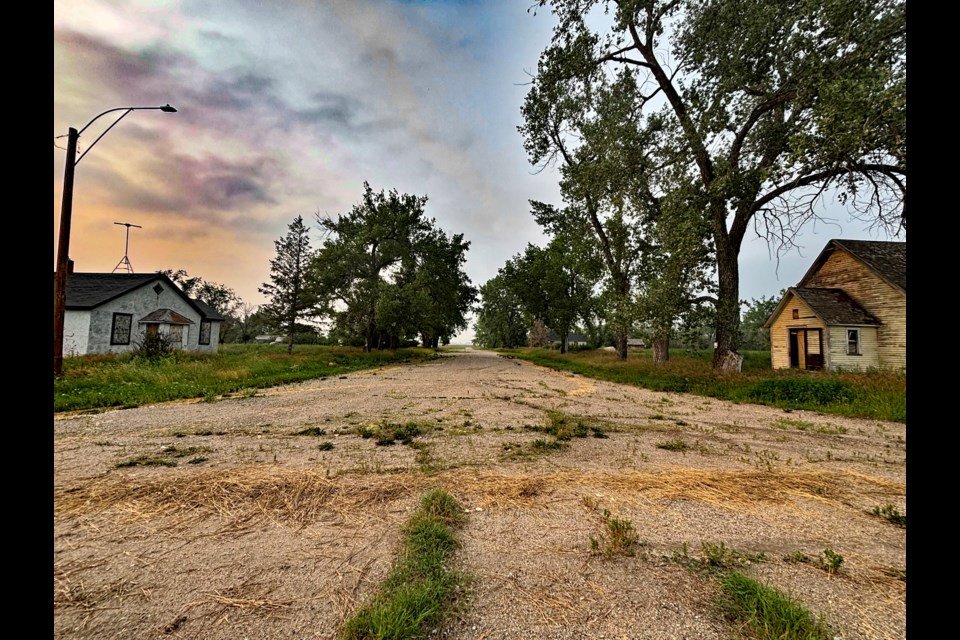For the past 30 years my summer holidays have taken me to places few ever dare to spend their leisure time.
Sure, there have been times in winter I headed to Mexico or Cuba but I always came away with a sense that either money was wasted or there were just too many people to have any level of serenity.
For more than three decades my need for rest and comfort came through aloneness amongst the shadows of yesteryear locales where people once lived real lives without cellphones dangling from their ears, and never ever beginning sentences with “like."
I have been a ghost town hunter for all these years in pursuit of the perfect photograph, one that depicts pure nobility of an ancient relic, such as a classic false-fronted general store half-collapsed against unrelenting elements, or a crumbling country grain elevator along an abandoned rail line waiting for its final fall.
These are the moments that trigger exhilaration, and a chance to capture final nobility.
Last month I made two road trips to Saskatchewan.
I am older now, and my hips are a mess but I just had to go.
There are ghosts calling, and there is a nagging sense time is running out for them.
As I made my way through west-central Saskatchewan I had a notion.
There was a place I just had to return to; a God-forsaken locale I had visited many times in the past and always called the Saddest Place on Earth.
At one time in the early years of the 20th century it was home to 200 citizens. It had up to 19 businesses, sports fields and indoor recreation facilities, a train station for freight and passenger service, a trio of grain elevators, and the most magnificent community and theatre hall in the region.
But time and progress eventually overcame the joy it once had.
A century later this once prosperous village is abandoned; a victim of rural depopulation, loss of rail service and country grain elevators and the advent of modern transportation choices.
It was a blistering hot day on July 15 when I found the road off the main highway to the Saddest Place on Earth.
I was expecting progress.
I was there three years earlier. A man had just bought property there. He said he was going to fix up an abandoned house, and bring life back to the village.
But it was not to be.
The man was gone. The Saddest Place on Earth was even sadder.
Main Street was like an old western movie; dusty and forlorn, and abandonment everywhere.
Grass was knee high on every property.
The door of the old Anglican church was wide open, occasionally slamming from bursts of howling winds.
The only thing missing was tumbleweed rolling across Main Street.
Time had seemingly stopped here, and it was absolutely exhilarating. I snapped more than 150 photos in less than half an hour.
But that exhilaration stopped when I noticed a graffiti tag across the entire width of the front of an abandoned Main Street house.
The Saddest Place on Earth was in the middle of nowhere, and yet someone felt the need to deface this monument of the past.
Sadly, today’s ghost towns, as well as many historical relics of the past, are falling prey to vandals, treasure hunters and trespassers.
Their illegal conduct is made so much easier by the easy access for tips they get through social media.
I began to seriously notice this almost a decade ago, and quickly became alarmed at the growing destruction of heritage artifacts and places.
I once had a website that listed hundreds of ghost town locations. I terminated the website and no longer offer precise locations on social media, or even privately to other ghost town hunters.
The risk is just too great.
And of course, the legal name of the Saddest Place on Earth won’t be printed here.
I did go back the following week. I brought my girlfriend Candice, who is a skilled photographer and social media manager. But I made her close her eyes as we drove down the dusty road into the village.
When we stopped the car on Main Street I asked her to open her eyes.
She said she felt a maelstrom of emotions, including profound helplessness, deep sorrow, and an “incomprehensible sense of loss that stirred in the wind.
“There’s nothing you can do to stop it so you surrender to the inevitable,” she said.
As for me I left this unimaginably stark and lonely place convinced there’s still so much more work to do, so many more forgotten places to record.
There will be more moments of exhilaration, but ones with greater clarity, understanding and care for the road ahead.
Johnnie Bachusky is an editor with the Albertan.

